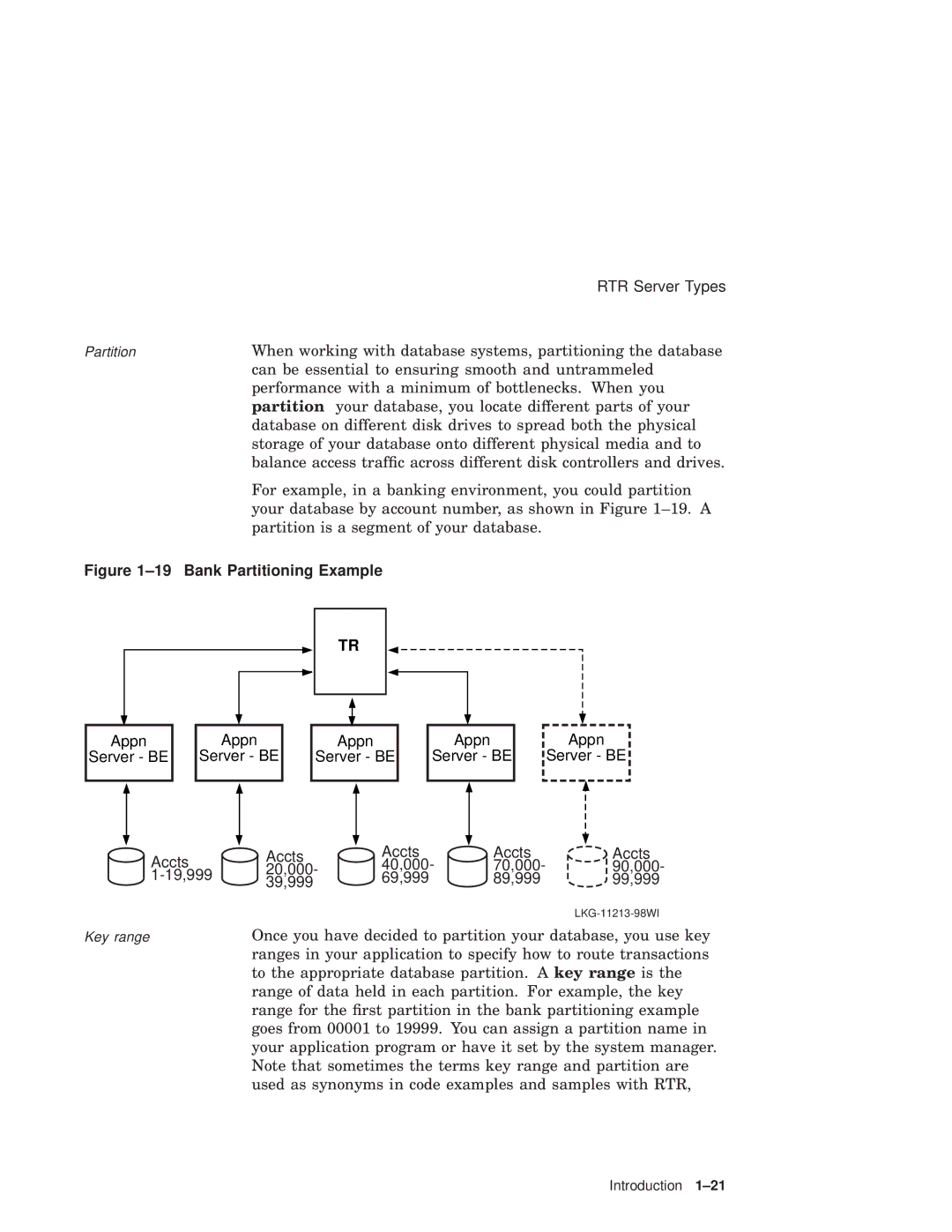
| RTR Server Types |
Partition | When working with database systems, partitioning the database |
| can be essential to ensuring smooth and untrammeled |
| performance with a minimum of bottlenecks. When you |
| partition your database, you locate different parts of your |
| database on different disk drives to spread both the physical |
| storage of your database onto different physical media and to |
| balance access traffic across different disk controllers and drives. |
| For example, in a banking environment, you could partition |
| your database by account number, as shown in Figure |
| partition is a segment of your database. |
Figure 1–19 Bank Partitioning Example
TR
Appn
Server - BE
Appn
Server - BE
Appn
Server - BE
Appn
Server - BE
Appn
Server - BE
Accts | Accts | Accts | Accts | Accts |
20,000- | 40,000- | 70,000- | 90,000- | |
39,999 | 69,999 | 89,999 | 99,999 | |
|
|
|
| |
Key range | Once you have decided to partition your database, you use key | |||
| ranges in your application to specify how to route transactions | |||
| to the appropriate database partition. A key range is the | |||
| range of data held in each partition. For example, the key | |||
range for the first partition in the bank partitioning example goes from 00001 to 19999. You can assign a partition name in your application program or have it set by the system manager. Note that sometimes the terms key range and partition are used as synonyms in code examples and samples with RTR,
Introduction
